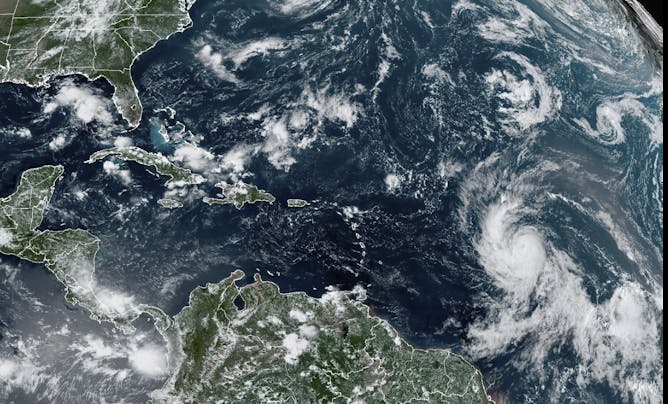|
Tamara Lich and Chris Barber, organizers of the so-called Freedom Convoy protests in Ottawa in early 2022, are on trial, facing charges of mischief, obstructing police, counselling others to commit mischief and intimidation. In the United States, dozens of Jan. 6 rioters have gone to trial, and some have been sentenced to several years in prison.
Today in The Conversation Canada, Thomas Klassen of York University looks into what these types of criminal proceedings will ultimately mean for the future of protest. He also asks whether politicians should face repercussions when they encourage or even incite violent protests, as former president Donald Trump has been accused of doing just prior to the Jan. 6, 2021 storming of the U.S. Capitol building.
He writes: “Protest is a fundamental feature of democracies, and they’re not always peaceful and planned. At times they spiral out of control and can threaten the existing order.” With that in mind, he adds, judges in these criminal proceedings must grapple with how protesters can proceed without incurring the full wrath of the state.
Also today:
All the best,
|

|
Lee-Anne Goodman
Politics, Business + Economics Editor
|
|

Lawyer Lawrence Greenspon walks with Tamara Lich as they make their way to the courthouse on the first day of Lich’s trial for organizing the Freedom Convoy protest in Ottawa.
THE CANADIAN PRESS/Adrian Wyld
Thomas Klassen, York University, Canada
Ongoing criminal proceedings in Canada and the U.S. tied to high-profile uprisings must shed light on how large protests can avoid incurring the full wrath of the state.
|

Evidence suggests gender-based violence increases during disasters and in the years that follow.
(Shutterstock)
Jean Slick, Royal Roads University
Research shows gender-based violence increases in the aftermath of disasters. Governments must incorporate ways of addressing it into their disaster response plans.
|

Hurricane Lee is currently growing in the Atlantic Ocean and on course for potential landfall in Canada. Can we learn from our past experiences with hurricanes to develop better responses?
(NOAA via AP)
Antoine Lachance, Concordia University
Can Hurricane Fiona give us a hint about what future climate change might bring to Eastern Canada? Unravelling this question could lie in understanding ancient storm records.
|

The health and economic impacts of heat are often invisible and silent.
(Shutterstock)
Jérémie Boudreault, Institut national de la recherche scientifique (INRS); Celine Campagna, Université Laval; Fateh Chebana, Institut national de la recherche scientifique (INRS)
Further research is needed in order to quantify the costs of extreme heat so we can reduce its damaging effects now and in the future.
|

The microbiome functions as an ‘invisible organ’ but it often makes its presence known by emitting sounds and smells.
(Shutterstock)
Vasu Appanna, Laurentian University
The microbiome and its signature smells are crucial for most organisms, whether human, insect or plant. The silent signals sent by the microbiome are essential communications that influence behaviour.
|

To maximize the benefits of social media while minimizing its harms, we need to better understand how it works and how it affects us.
(Shutterstock)
Juan S. Morales, Wilfrid Laurier University
Two recent studies shed light on how seemingly simple social media features can have complex effects on user attitudes and beliefs.
|
La Conversation Canada
|

Que faire si une mouche à fruit se noie dans votre verre de vin? Connaissant les endroits peu ragoûtants où ces insectes se tiennent, peut-on encore le boire?
Anne Webber/Shutterstock
Primrose Freestone, University of Leicester
Un microbiologiste explique quel est le risque pour votre santé de boire un bon sauvignon blanc bien frais dans lequel une mouche à fruit s’est posée.
|
Arts
|
-
Drew M. Dalton, Dominican University
For Buffett, escapism was not merely some fiddling flight of fancy. It acknowledged the brutalities and indignities of everyday life.
|
|
Culture + Society
|
-
Charles Helm, Nelson Mandela University
Trackway findings support the notion of southern Africa being one region where human cognitive and practical ability developed a very long time ago.
|
|
Education
|
-
Jamaal Abdul-Alim, University of Maryland
While it’s widely believed that Howard University came to be known as “The Mecca” in the 1960s, new evidence shows the nickname is more than half a century older than that.
|
|
|
|
| |
| |
| |
| |
|
|